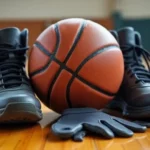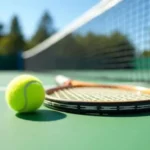
6 Famous Soccer Players of History
Notable names in soccer history have changed the game forever; discover who these six legendary players are and why they remain unforgettable icons.


Choosing the best basketball ball comes down to where you play and how you train. Indoor players benefit from composite leather, which offers a softer touch and better grip on hardwood courts. Outdoor players, on the other hand, need durable rubber that can withstand rougher surfaces like asphalt or concrete. Size also plays a key role—youth, women’s, and men’s leagues use different ball sizes to promote proper grip, shooting form, and injury prevention.

Beyond surface and size, the best basketball ball should provide consistent grip, reliable bounce, and strong air retention. If you split your time between indoor gyms and outdoor parks, a hybrid composite ball gives you the best balance of versatility and durability. Choosing the right ball not only improves control and comfort but also makes your workouts safer and more enjoyable—helping you stay active, build skills, and keep progressing in the game.
When selecting a basketball, several key factors must be evaluated to assure maximum performance and durability.
These include material quality, grip texture, size, weight, and intended playing surface. Proper inflation pressure and brand reputation also influence performance.
Considering these elements assures the basketball suits the player’s needs, whether for practice, competition, or casual play, enhancing overall experience and longevity.
Basketballs are categorized based on their material composition and intended use, each designed to optimize performance under specific conditions.
Common types include leather, synthetic composite, and rubber basketballs.
Leather balls suit professional indoor play, synthetic composites offer versatility for indoor and outdoor use, while rubber balls are durable and ideal for outdoor courts and recreational play.
Indoor basketball courts demand equipment that complements their smooth surfaces and controlled environments.
Leather basketballs are preferred for indoor play due to their superior grip and soft touch, enhancing ball control and shooting accuracy. Composite leather balls also perform well, offering durability while maintaining a similar feel.
These balls optimize performance and longevity on polished hardwood floors typical of indoor courts.
Although outdoor courts present tougher conditions, selecting the right basketball guarantees durability and consistent performance.
Outdoor basketballs typically feature rubber or composite covers designed to withstand rough surfaces and weather exposure. Their construction emphasizes abrasion resistance and grip retention.
Choosing a ball specifically engineered for outdoor play guarantees longer lifespan and reliable handling despite frequent contact with concrete or asphalt courts.
Proper basketball size is essential for skill development and safety across different age groups.
Youth players typically use size 5 balls (27.5 inches), while boys aged 12-14 shift to size 6 (28.5 inches).
Adult men use size 7 (29.5 inches), and adult women use size 6.
Choosing the correct size enhances control, shooting accuracy, and reduces injury risk during play.
Selecting the right basketball size is only one factor in the overall playing experience; the brand of the basketball also greatly influences performance and durability.
Leading brands like Spalding, Wilson, and Molten dominate the market, each known for quality craftsmanship and innovation.
These brands consistently deliver balls suited for various levels, from recreational to professional play, ensuring reliability and consistent bounce.
The composition of a basketball greatly impacts its grip, durability, and overall performance.
Common materials include synthetic leather, rubber, and genuine leather. Synthetic variants offer affordability and weather resistance, while genuine leather provides superior feel and longevity, primarily used in professional settings.
Rubber balls are durable and ideal for outdoor play. Each material caters to different playing environments and user preferences.
Maintaining a basketball extends the lifespan and preserves the quality of its materials, whether synthetic leather, genuine leather, or rubber.
Proper inflation is essential; under- or over-inflation damages structure.
Store the ball in a cool, dry place, away from direct sunlight.
Clean it regularly with a damp cloth, avoiding harsh chemicals.
Following these tips guarantees consistent performance and durability.
Choosing the best basketball depends on the playing environment, player age, and skill level. Leather basketballs excel indoors with superior grip and feel, while rubber or composite balls offer durability for outdoor courts. Proper sizing enhances control and performance, with size variations catering to different age groups. Understanding materials and brand quality further aids selection. Ultimately, selecting the right basketball guarantees an enjoyable and effective playing experience across all settings.

Notable names in soccer history have changed the game forever; discover who these six legendary players are and why they remain unforgettable icons.

Learn about 7 exciting ball sports starting with "L" that challenge skills and strategy in unexpected ways—discover which one might become your new favorite game.

From shoes to protective pads, basketball gear enhances performance and safety—discover why choosing the right equipment matters more than you might think.

Discover the essential gear and tips you need to start tennis confidently—your perfect game begins with knowing what truly matters on the court.

Powerful, poised, and pioneering—discover the 3 best female tennis players whose legacies continue to inspire. Prepare to be amazed by their stories.

The trials basketball players face go beyond injuries and pressure, revealing challenges that test their resilience in ways fans rarely see.